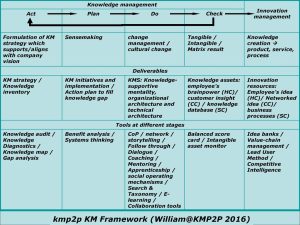Knowledge Management Implementation
Identifying objectives is one of the first steps in any technology implementation. Defining your goals for a knowledge management solution will help you define your success and performance measures. Achieving these goals will be easier if you have a clear vision of what you want to achieve. Make sure that your stakeholders are included in this step. In addition to setting goals, you should also determine who will benefit most from the Knowledge management solution.
It’s crucial to set measurable goals when you begin implementing a knowledge management solution. Clearly define your organization’s overall problem areas and your goals for the program’s use. Keep in mind that your objectives should support your driving force for the company. Set short- and long-term goals to ensure your knowledge management efforts are on track, and then set long-term goals to manage the big picture.
The goal of your knowledge management solution implementation is to improve your company’s culture and knowledge sharing. Once you’ve set your goals, you can begin the implementation process. Creating a roadmap will help you ensure that your knowledge management solution is the right fit for your company. It should demonstrate early wins and provide support for future moving parts. Identify the specific objectives for each milestone. Ideally, each milestone should focus on achieving a specific business goal.

What is a Knowledge Management Implementation Plan?
In an organization, your KM leader should lead the KM efforts of key groups. These groups might include large countries, business units, and major work teams. You should also identify project leaders, who should report to the organization’s KM leader. Several projects will overlap, and team leaders should make it possible to collaborate frequently. The goal of a knowledge management initiative should be to improve the company’s ability to serve its customers and shareholders.
A knowledge management implementation plan should be customized for your company’s needs. Ensure the system fits your business processes and goals. As long as you’re implementing the best system possible, you’ll need to monitor its effectiveness. You’ll want to measure the time it takes to answer each question. You’ll also need to monitor the questions and answers on the knowledge management platform. Once you’ve established a plan for your knowledge management implementation, you should begin measuring its results.
Once you’ve established your objectives, it’s time to choose the appropriate system for your company. A knowledge management implementation plan should take into consideration the different levels of complexity and organizational needs. For example, it should be tailored to the particular company and its needs, or it could be an overly complex process. A good KM implementation plan will help the organization reduce the cost of implementing the solution and enhance the employee satisfaction.